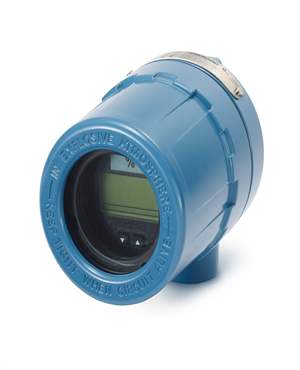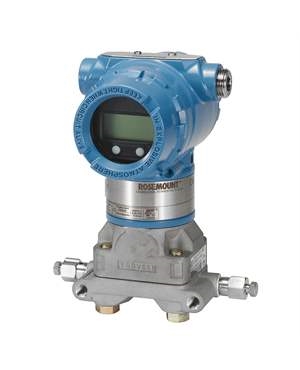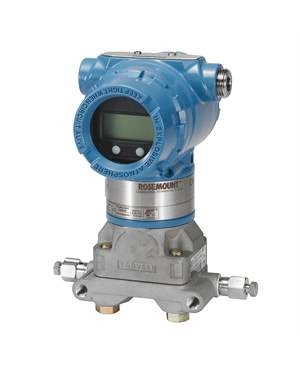The Benefits and Challenges of HVAC System Balancing
Brian Craig
April 27, 2023
HVAC system balancing involves adjusting the airflow, temperature, and pressure in ductwork and pipes to ensure that the system is functioning efficiently and providing maximum comfort. In this blog post, we will discuss the benefits and challenges of HVAC system balancing and how pressure transmitters play a crucial role in achieving optimal balance.
What is HVAC System Balancing?
HVAC system balancing is a process that helps ensure that you’re building's heating, ventilation, and air conditioning (HVAC) system is working correctly. This involves testing and adjusting the airflow and environmental conditions like temperature, humidity, and air quality of your HVAC system. During this process, professionals measure the air volume and pressure in different areas of your building and make adjustments to HVAC components such as air diffusers, grilles, dampers, and fans. This helps to achieve the desired airflow and temperature throughout the building.
Balancing Techniques and Procedures
The balancing process involves measuring and adjusting various aspects of the HVAC system to achieve optimal performance. Common balancing techniques include air balancing and water balancing, and factors such as duct design, equipment sizing, and control system settings can all impact balancing. Proper documentation and measurement verification are also essential to ensure accuracy and consistency.
Benefits of HVAC System Balancing
- Improved Energy Efficiency and Cost Savings: Balancing the HVAC system can help to optimize energy consumption, resulting in cost savings on utility bills. Pressure transmitters can help to identify areas of the system that are consuming more energy than necessary, allowing for targeted adjustments.
- Better Indoor Air Quality: Balancing the HVAC system can help to reduce indoor air pollution and improve air quality by ensuring proper ventilation and air filtration. This can help to reduce the risk of respiratory issues and improve overall health.
- Enhanced Comfort and Temperature Control: Balancing the HVAC system ensures that air is distributed evenly throughout the building, resulting in consistent temperature and improved comfort levels. Pressure transmitters can help to measure and adjust the pressure in ductwork and pipes to achieve optimal airflow.
- Reduced Equipment Wear and Tear: Balancing the HVAC system can help to reduce the workload on equipment, resulting in less wear and tear and longer lifespan. This can help to reduce maintenance and repair costs over time.
- Longer Lifespan for HVAC Systems: Balancing the HVAC system can help to reduce the strain on equipment and extend its lifespan. This can help to reduce the need for premature replacement and save money in the long run.
Challenges of HVAC System Balancing
- Time and Labor-Intensive Process: Balancing the HVAC system can be a time-consuming process that requires skilled technicians and specialized equipment. Pressure transmitters can help to streamline the process by providing accurate measurements and reducing the need for manual adjustments.
- Requires Skilled Technicians and Specialized Equipment: Balancing the HVAC system requires experienced technicians who understand the complexities of the system and can make adjustments as needed. They also need specialized equipment such as pressure transmitters to accurately measure pressure in the ductwork and pipes.
- Difficulty in Balancing Older or Poorly Designed Systems: Older or poorly designed HVAC systems may be more challenging to balance due to design flaws or outdated equipment. Pressure transmitters can help to identify areas that need improvement, but more extensive renovations may be required to achieve optimal balance.
- Balancing Adjustments May Need to be Repeated Periodically: The HVAC system's balance may shift over time due to changes in the building's occupancy or external factors such as weather conditions. Regular maintenance and adjustments may be necessary to maintain optimal balance.
Rosemount pressure transmitters are one of the most popular and widely used pressure transmitters in the HVAC industry due to their accuracy, reliability, and durability including such as, 3051 Pressure Transmitter, Coplanar Pressure Transmitter, Gage and Absolute Pressure Transmitter, Liquid Level Transmitter. These transmitters can measure pressure levels up to 10,000 psi and have a range of configurable output options, making them ideal for HVAC system balancing. The Transmitter Shop (TTS) is a distributor of superior quality remanufactured transmitters and control valves originally sourced from reputed brands such as Rosemount, Fisher, Foxboro and so on. The company specializes in remanufacturing, reconditioning, and calibration of devices.
Related Posts
- What are the Steps Involved in Calibrating Pressure Gauge?
- All Important Questions on Reconditioned Transmitters Answered
- Is Remanufactured Transmitter a Better Option than a New One?
- Differential Pressure Transmitters: How Do They Help in Flow Measurements?
- 3 Whats that Explain How Often You Should Calibrate Pressure Transducer
- Guidelines for Troubleshooting Pressure Transducers
- Learn How to Calibrate a Pressure Transmitter – II
- Learn How to Calibrate a Pressure Transmitter
- Know Three Interesting Uses of Pressure Transmitters
- Things to Check before Buying a New Pressure Transmitter
- A Look at Various Types of Industrial Transmitters – Part II
- A Look at Various Types of Industrial Transmitters Part I
- All Questions on Smart Transmitters and their Calibration Answered
- 3 Major Pressure Transmitter Technologies That Made the Device Popular
- An Unconventional Guide to Selecting the Right Pressure Sensor
- Factors To Be Considered While Differentiating $40 and $400 Pressure Transmitters
- Tips to Augment the Performance and Service Life of Pressure Transmitter
- Factors of Consideration When Choosing Pressure Transmitters
- 5 Most Popular Pressure Transmitter Technologies
- Tips to Improve the Performance of Pressure Sensors
- Factors to Consider When Choosing a Pressure Transmitter Manifold
- Safety Tips for Differential Pressure Transmitter Operation
- Impact of Shock and Vibration on Pressure Transducer
- Rosemount 3051S vs 3051C Transmitter – What is Your Choice?
- Rosemount 2088 Vs Rosemount 3051 – A Few Points of Differences Discussed
- Difference in Conventional Transmitters and Smart Transmitters
- How to Choose Diaphragm Seals for Your Application?
- How to Select Pressure Transmitter for Your Application?
- Remote Seals: Significance, Working Principle & Applications
- How Do You Calibrate A Flow Transmitter?
- What is Absolute Pressure Transmitter & how does it work?
- HART Communication Protocol: Overview, Working Principle, Benefits in Industrial Automation
- Absolute and Gauge Pressure Transmitters - Overview and Working Principle
- Flow Meter vs Flow Transmitter: Know the Difference
- How Do You Test for 4 to 20mA Signal in a Pressure Transmitter?
- Multivariable Transmitter: What Is It and How Does It Work?
- Pressure Transmitters vs. Pressure Transducers: Learn the Differential Characteristics
- Procedure to Calculate Accuracy of Pressure Transmitter Discussed
- Testing Pressure Gauges: Processes of Verification Test and Functional Test
- An Ultimate Selection Guide for Flow Transmitters
- The Benefits and Challenges of HVAC System Balancing
- Fluid Flow Isolation Techniques for Pressure Instrumentation
- Understanding Pressure Ranges and Units for Fluid System Monitoring
- Understanding the Impact of Pressure Fluctuations on Drying Performance
- Monitoring and Controlling Energy Production in Power Plants
- Common Challenges in Air Flow Measurement and How to Overcome Them
- Pressure Monitoring in Pump Systems: A Comprehensive Guide
- Exploring Density and Viscosity Measurement in Industrial Processes
- Pneumatic Pressure Controllers: A Safe Choice for Hazardous Areas
- A Practical Guide to Vacuum Measurement and Operation
- Key Sensors for Monitoring Emissions in Wet and Dry Scrubber Systems
- Complete Hydrogen Gas Safety and Measurement Solutions
- Steam Boiler Drum Level Measurement A Comparison of Control System Technologies
- Furnace Flame Sensor Faults Everything You Need to Know for Safe Operation
- Comparison between Multi Valve Manifolds Block Valves and Bleed Valves
- Furnace Flame Sensor Faults Everything You Need to Know for Safe Operation
- Pneumatic Pressure Controllers: A Safe Choice for Hazardous Areas
- How Can Greenhouse Gas Emissions Be Reduced?
- A Practical Guide to Vacuum Measurement and Operation
- Understanding Electrochemical Detection: Principles, Techniques and Environmental Application
QUICK ENQUIRY







